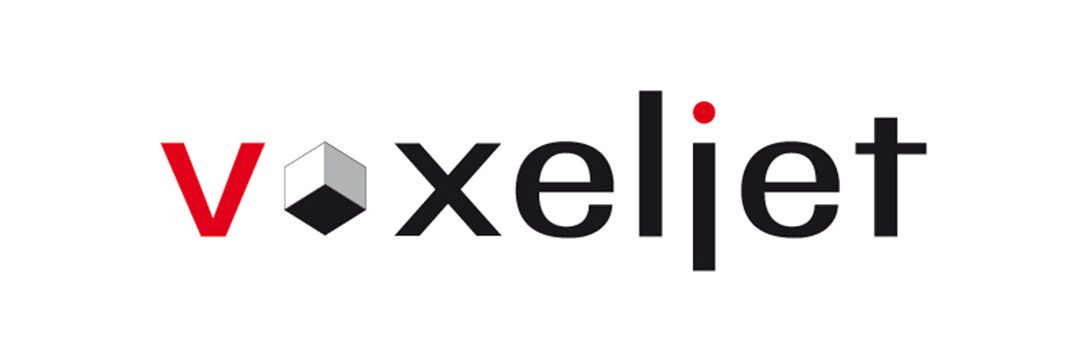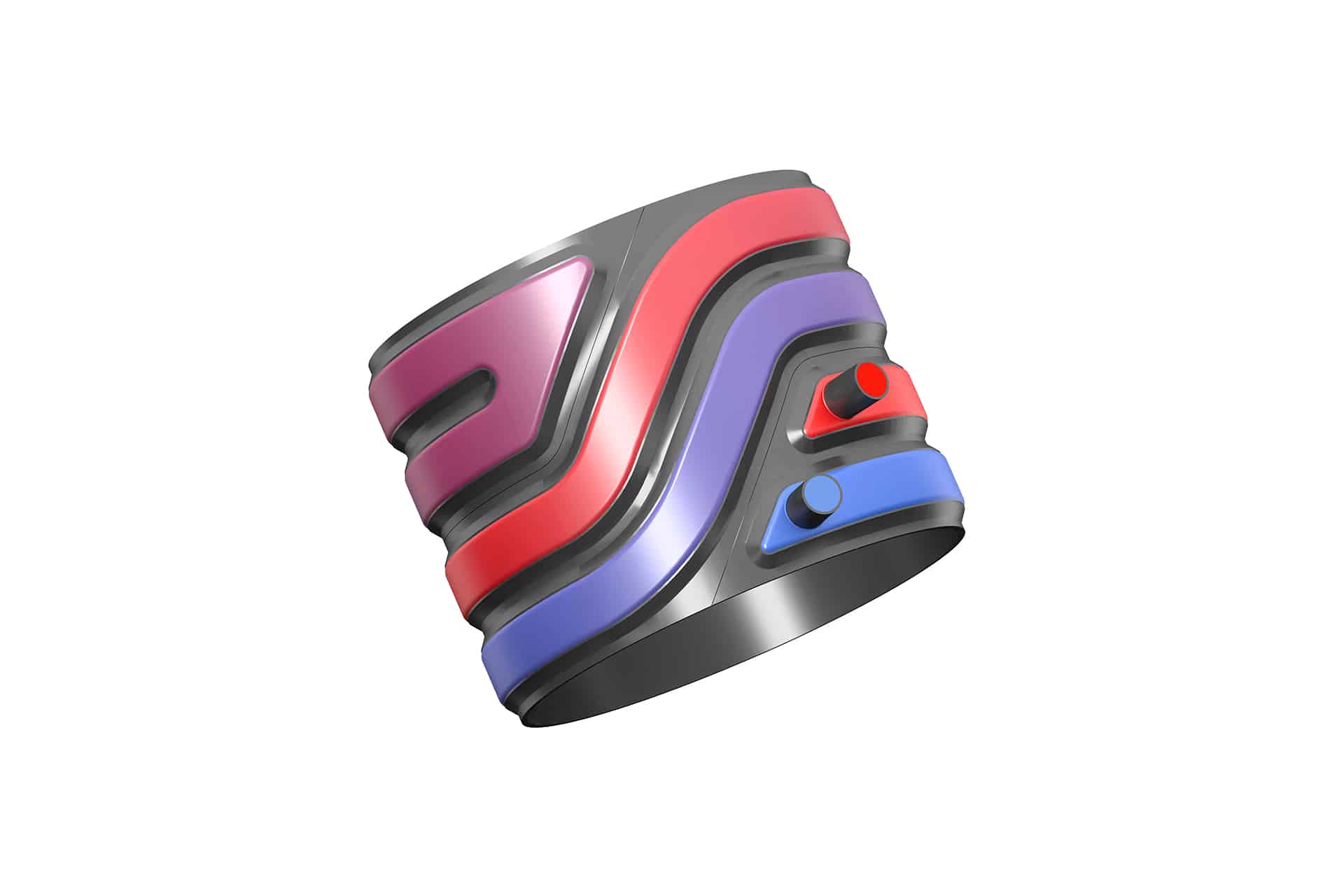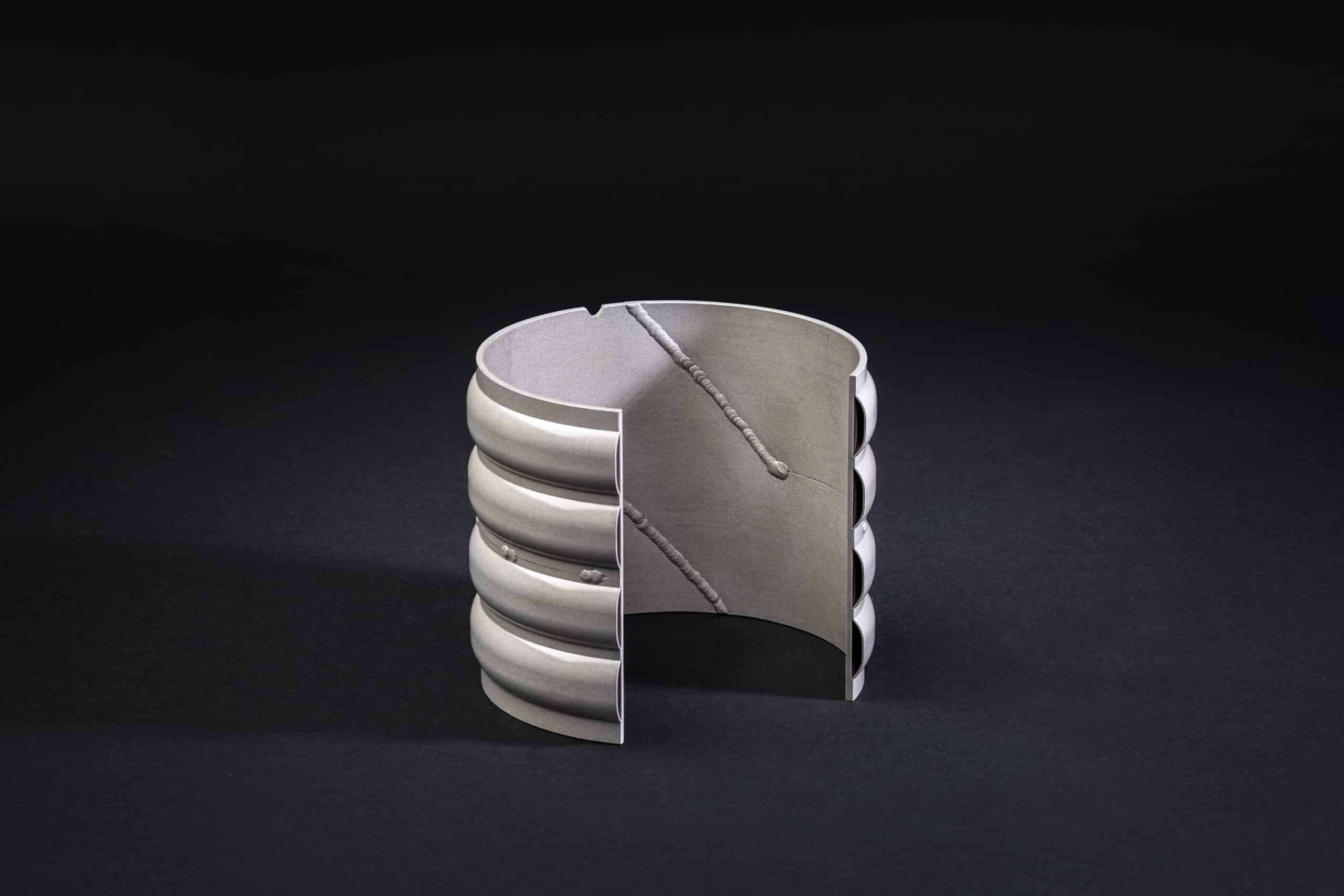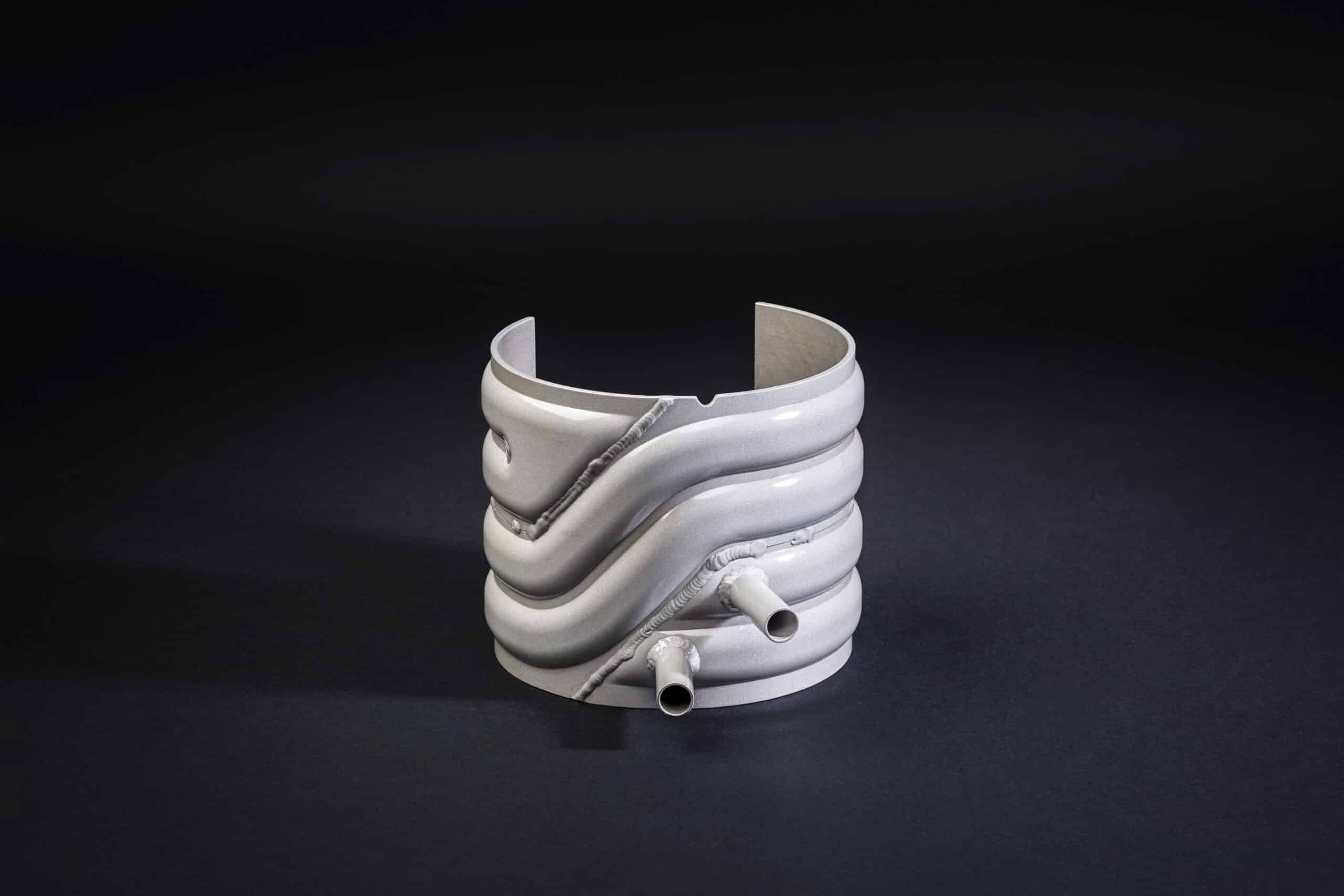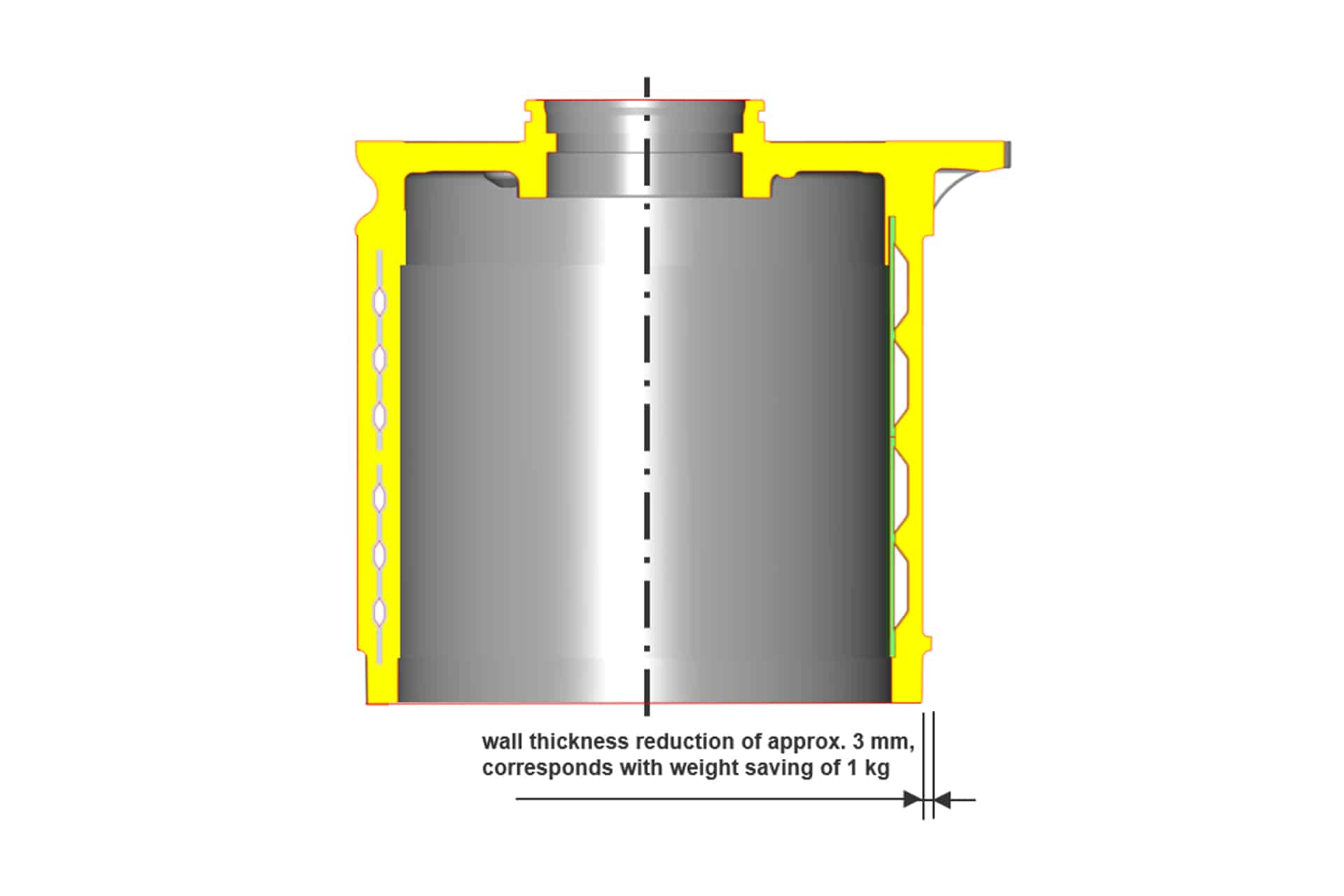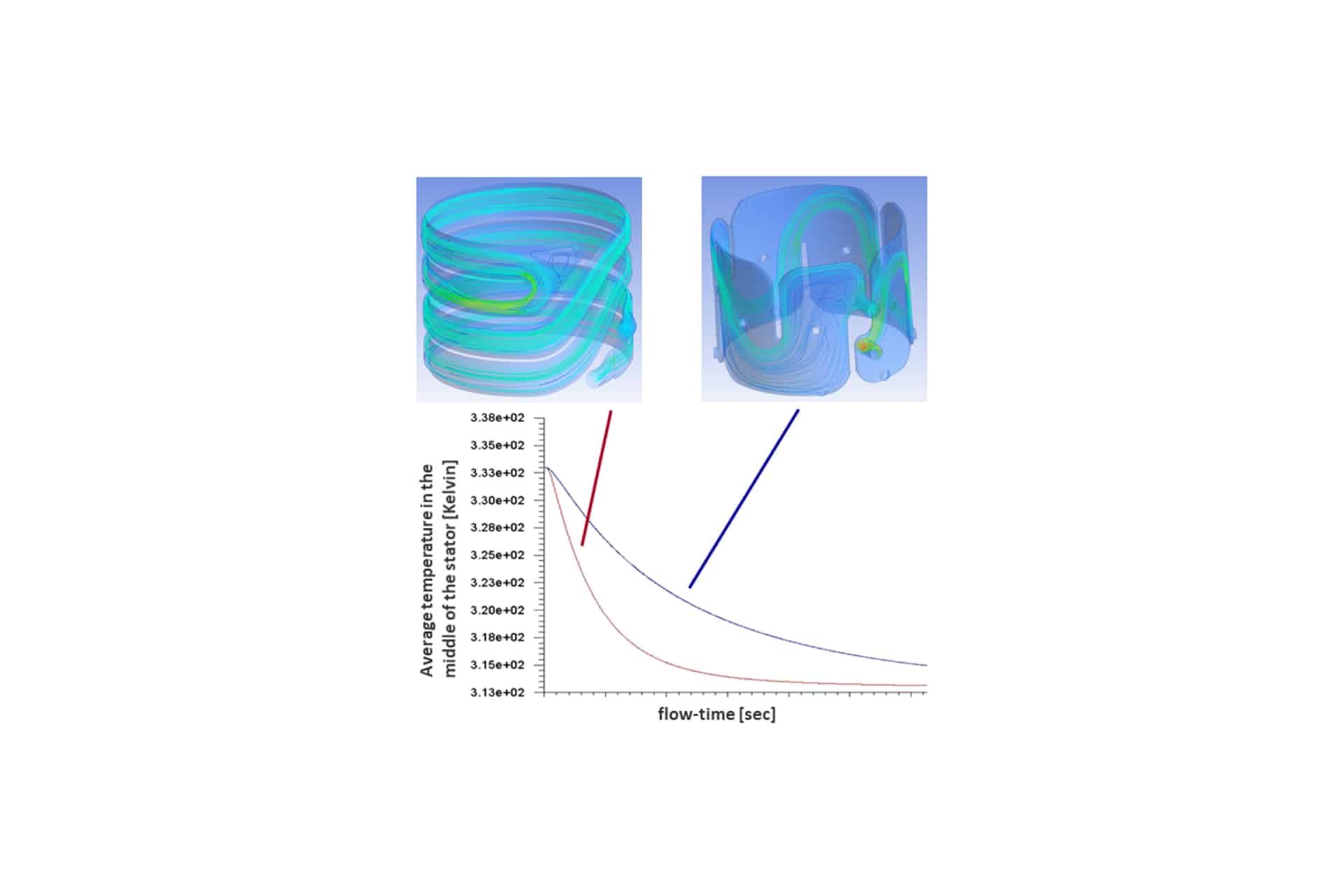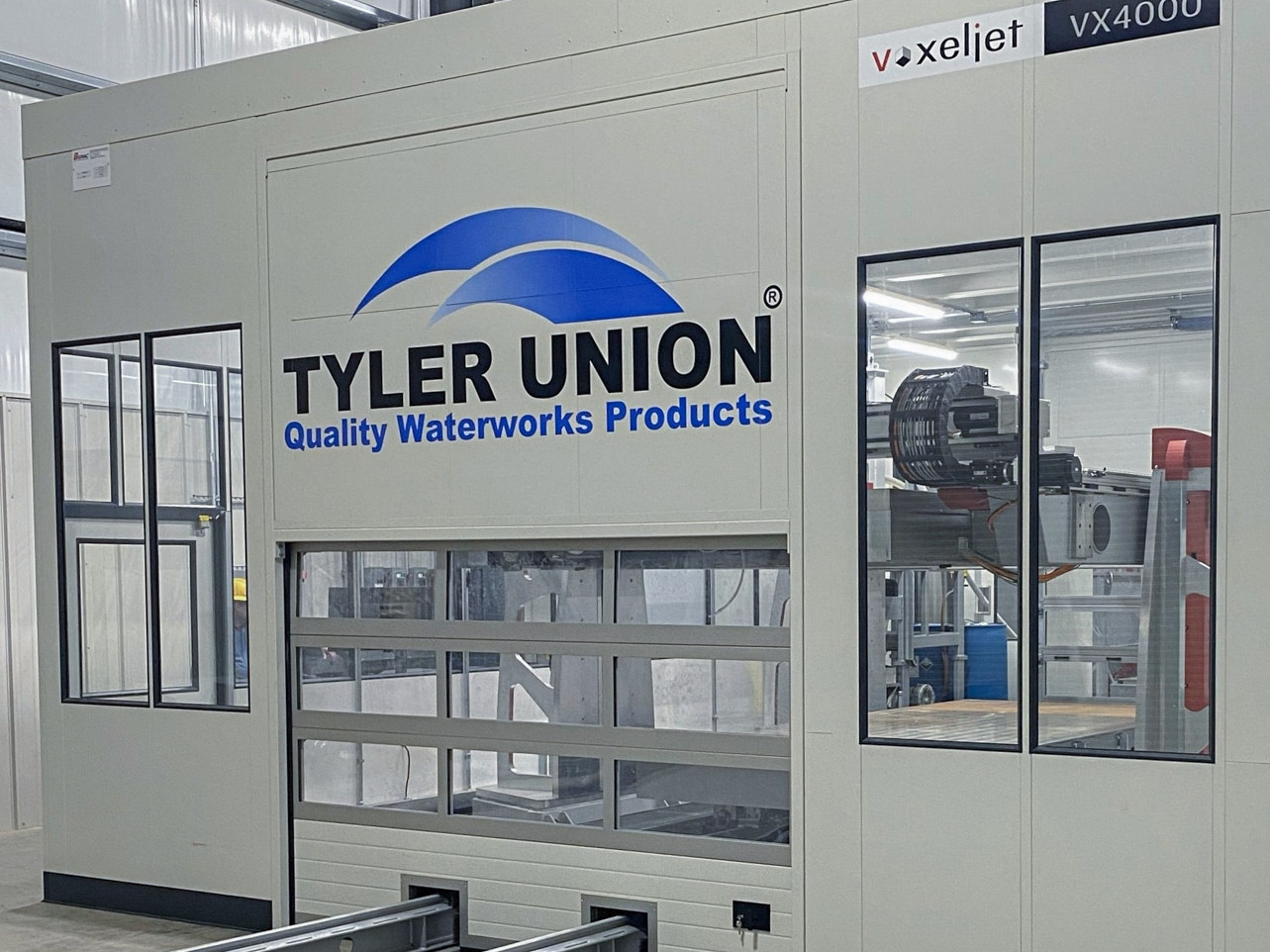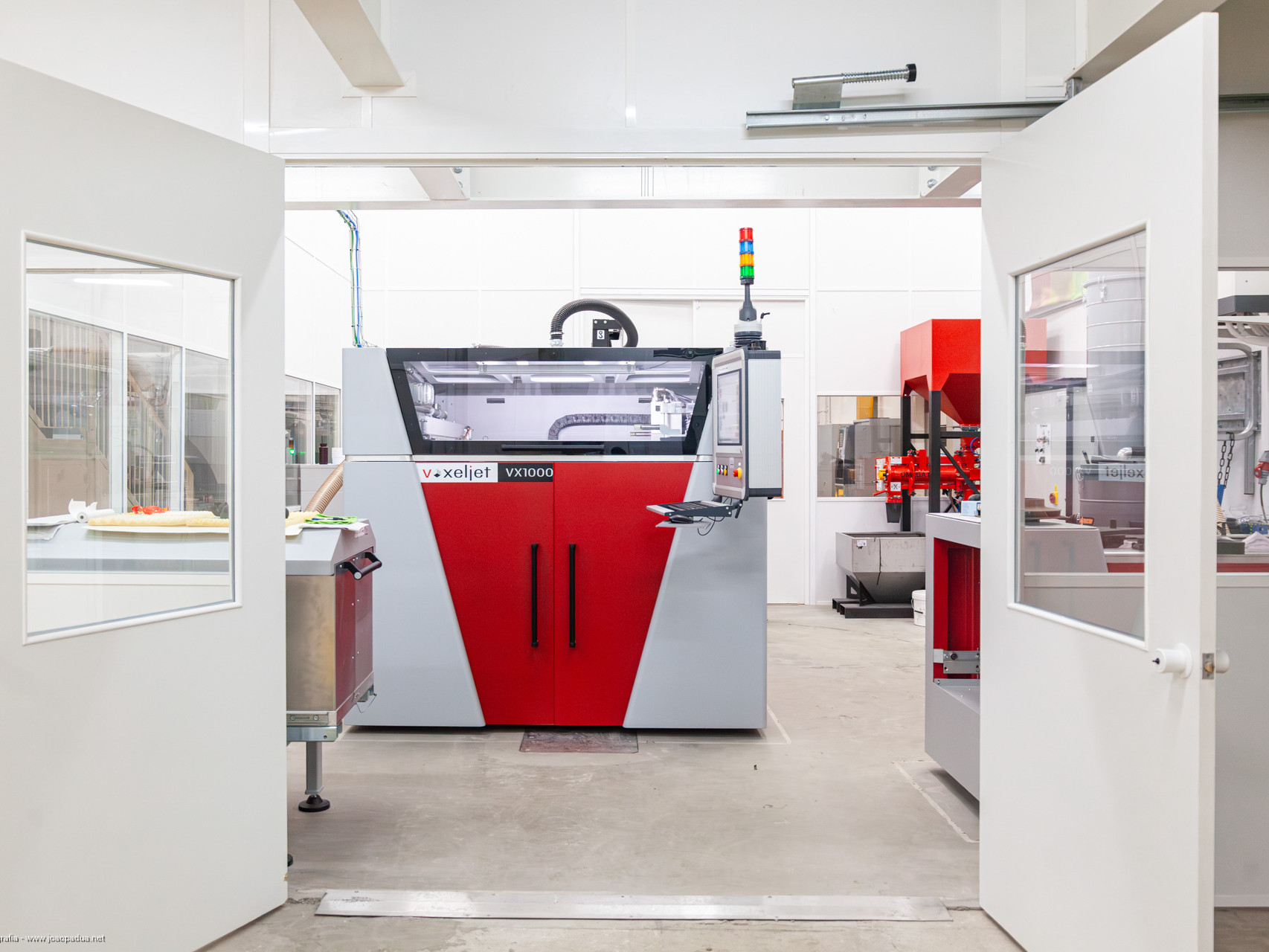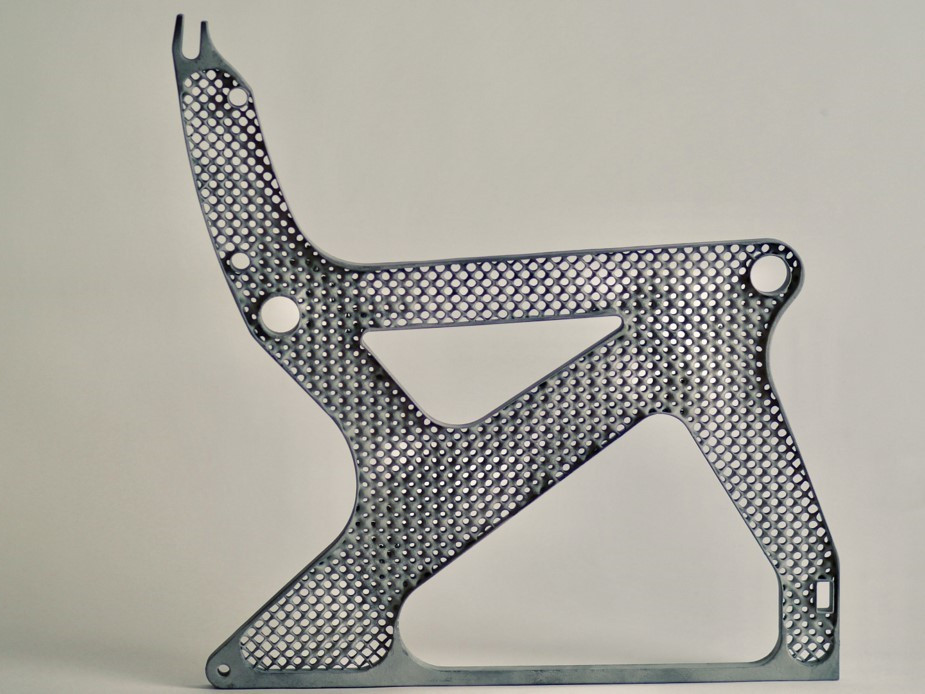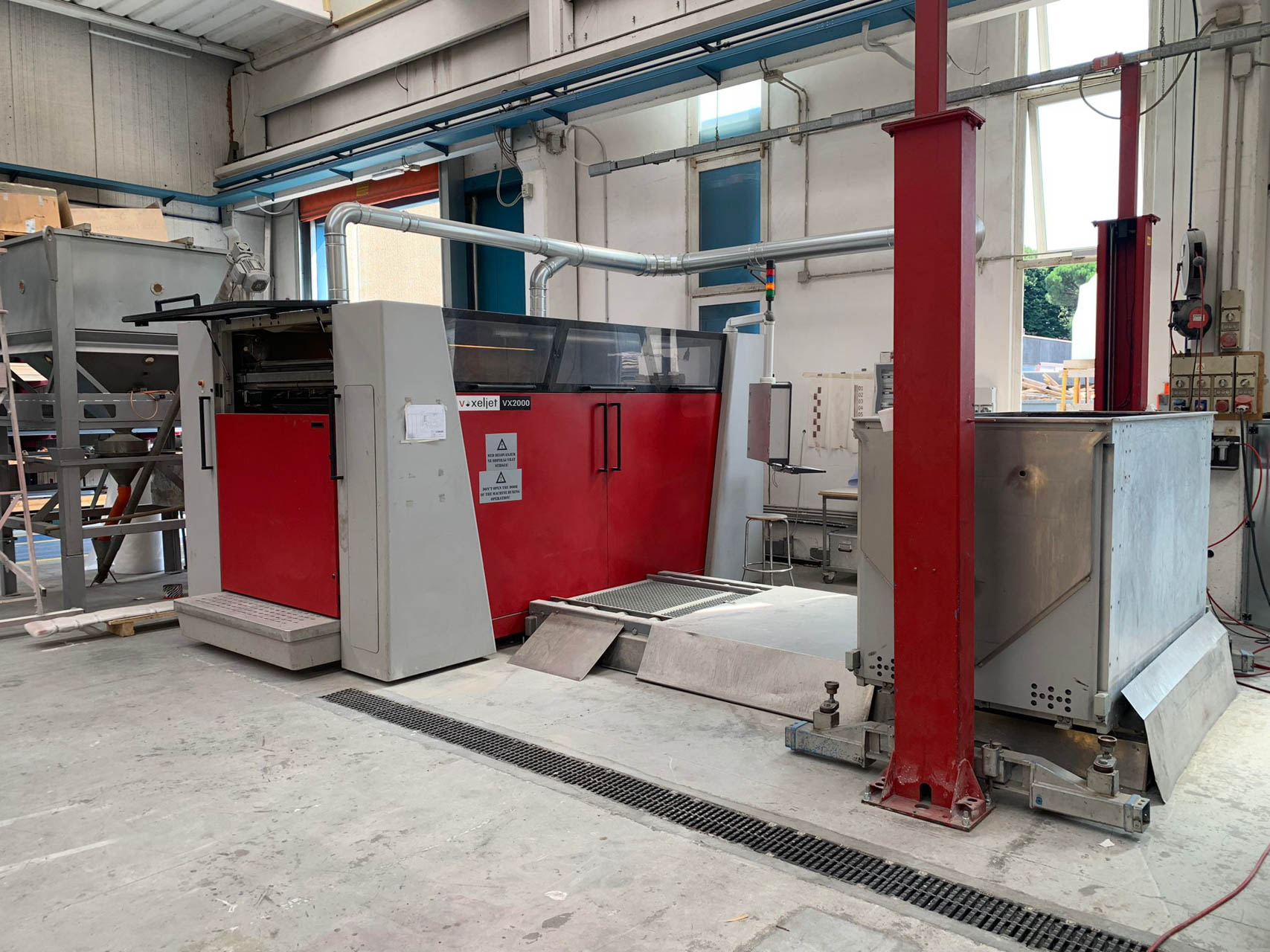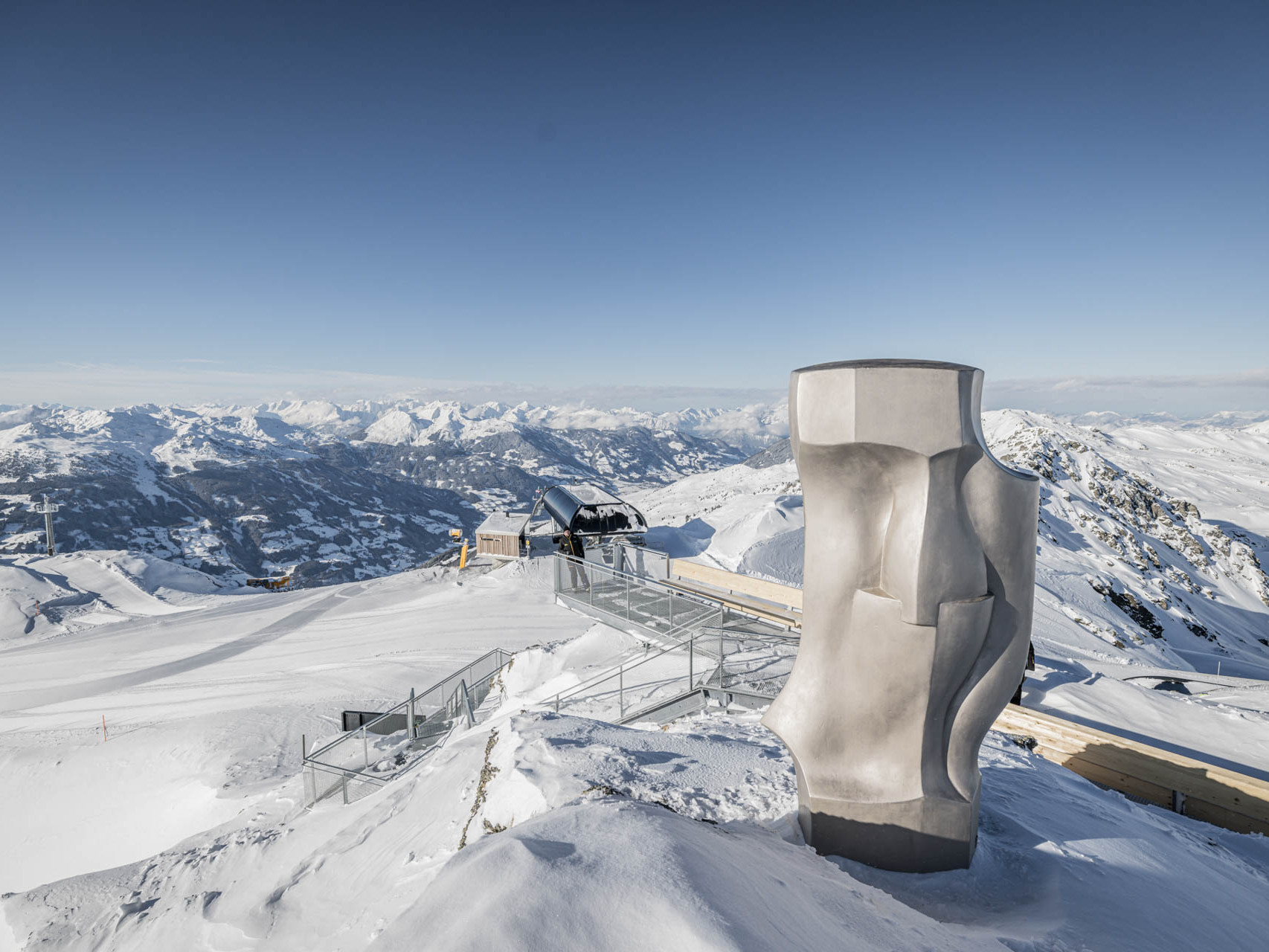- Home
- Case Studies
- Automotive
- 3D printing for optimized electric motors
Patent-pending manufacturing process for electric motor housings offers new opportunities
AionaCast has been a sales partner to international foundries in German-speaking countries for a decade. Now the Swabian company is setting out to revolutionize the manufacturing process for electric motor housings with a patent-pending innovation. A new type of aluminum cast housing for traction electric motors used in cars and trucks for xEV is said to increase cooling capacity, reduce weight, eliminate a risk of leakage and be more cost effective.
The process is the perfect combination of two established production methods. A roll-bonded core (RoBoC) is inflated on one or both sides with approx. 100 bar of compressed air to create cooling channels of the usual dimensions.
This core is placed in a mold and cast around with aluminum. During the casting process, temperature is controlled from the inside through the pre-existing channels so that deformation or melting is prevented. The result is a metal sheet integrated into the housing with the structures needed for cooling the E-machine.
Optimized cooling layout avoids hot spots
The cooling channel layout can be represented in a helical shape. Thus, the hottest channel section is embedded between the coldest and second coldest channel sections. The result is a homogeneous temperature distribution without hot spots during engine operation.
This design cannot be realized in the classic 2-shell design (e.g. in die casting), as there would be a thermal short circuit due to overflows from one channel area to the other. Depending on the customer’s requirements, however, meander-shaped or flat channel layouts can also be realized.
Sealing against cooling water leakage is ensured by means of the self-contained roll bond core and is therefore no longer dependent on the casting quality.
The second generation further increases efficiency
AionaCast has provided feasibility evidence by means of a “proof of concept”. Little attention was paid to the cross-sections for the cooling medium and weight reduction. Now the team is working on Generation 2. Here, the inserted and inflated sheet is in direct contact with the stator, which again increases efficiency and reduces weight.
This concept makes it possible to reduce the wall thickness between the stator and the water-carrying channel from approx. 5 to as little as 1.5 mm. This wall thickness reduction is also reflected in the overall weight of the electric motor housing for a typical BEV traction motor, which is reduced by approx. 1 kg.
Furthermore, the response time from the interaction of the optimizations is significantly reduced. To present the performance of the system, a CFD simulation of an existing traction motor from a major OEM was compared with the RoBoC Gen2 development. The time for the temperature reduction from 60° to 40°C in the stator could be reduced by about 70%.
A pleasant side effect is also the significantly reduced casting process time, where the time until component removal from the casting mold can be significantly reduced due to direct cooling of the aluminum casting from the inside.
Jürgen Pohl (Managing Director AionaCast) summarizes the many advantages of the RoBoC Generation 2 concept:
The advantages at a glance:
- The helix design and the smaller distance between stator and cooling medium results in higher thermal efficiency.
- The tightness of the cooling water channel is independent of the casting quality. Due to the concept, seals are eliminated and there is no residual dirt problem due to the absence of core sand. This makes this innovation more reliable than conventional systems.
- To list just a few cost advantages, such as the elimination of assembly (2-shell design), the lack of a sand core eliminates the need for reworking and capping of the core marks, several quality tests are no longer required, and the not negligible shorter casting cycle makes the invention competitive.
For further development (prototypes), patent holder AionaCast, which is also responsible for project management, was able to win renowned partners for the modification of a Bosch series housing:
- Kupral S.p.A. (Italy) / Casting technology
- voxeljet AG (Germany) / 3D printed mold for core package
- LPM S.p.A. (Italy): casting equipment
- Peter Prinzing GmbH (Germany): Roll-Bond bending
In view of the approx. 75 million traction electric motors to be produced from 2030, Jürgen Pohl sees the further business development for this new manufacturing process as extremely positive. In addition, the same manufacturing concept with modified cooling channel layout (e.g. meander-shaped, flat or parallel channels) also offers potential for the production of battery and power electronics housings.
More Case Studies
VX4000 expands foundry and business capabilities in water works
By installing a VX4000 3D printer into their new foundry, waterworks specialist Tyler Union not only reduces tooling costs drastically but also positions itself as a forward thinking industry leader.
3D printing for sand casting in Portugal
CINFU is a Portugal-based training and innovation centre for the foundry industry. With a VX1000 3D printer in house, CINFU is gaining significant adaptive advantages for the foundry industry.
Weight reduction through 3D printing: lightweight seats for the aircraft industry
Lightweight seats produced using 3D printing can reduce costs and emissions in the aircraft industry.
Bronze-cast sculptures produced with 3D printing
In the Freedom Monument Sculpture Park, there are three bronze sculptures by artist Shaleigha D'Clark, created using 3D printing
Lanulfi Models optimizes mold making with VX2000
The integration of voxeljet’s VX2000 has redefined Lanulfis approach to metal casting. It offers significant reductions in lead times and enhances design capabilities.
3D-printed sculptures at 2500 metres
At 2,500 metres in the Tyrolean Alps, these 3D-printed sculptures enjoy a special view. They are the fulfilment of a long-held dream of Tyrolean artist Magnus Pöhacker.
3d printed joysticks for tractors and machines
For Lindner Traktorenwerke, 3D printing is already an alternative to injection molding. For example, for customized joysticks and control elements for their tractors.
Industrial 3D Printer
Our portfolio of industrial 3D printers ranges from compact systems for research to additive series production.
